Shop vacuums, commonly known as sh————–op vacs, stand as advanced cleaning tools that surpass conventional vacuum cleaners by not only handling solid debris but also efficiently tackling liquid spills. While regular vacuum cleaners excel at removing dust, shop vacs have revolutionized cleaning by seamlessly transitioning from drying wet surfaces to draining small bodies of water, such as pools or aquariums.
Versatility Beyond Conventional Limits: Unlike their traditional counterparts, shop vacuums boast the ability to handle both wet and dry cleaning tasks. This versatility extends to construction sites, where they were initially designed to suction wood shavings and leftover materials.
Domestic Adaptation: Evolving from their industrial roots, manufacturers adapted shop vacuums for domestic use. Renowned as wet-dry vacuums, they effortlessly address liquid spills and solid debris, making them indispensable for households, offering a comprehensive cleaning solution.
The Genesis of Shop Vacuums: The genesis of shop vacs emerged from the limitations of regular vacuum cleaners, incapable of effectively managing liquid spills. This led to the creation of a powerful and multifunctional cleaning tool, bridging the gap between dry and wet cleaning tasks.
Features of a Shop Vac
Efficient use of a shop vacuum hinges on understanding key components like the motor, collection tank, filters, hose, nozzles, wheels, blower port, and power switch for optimal performance.
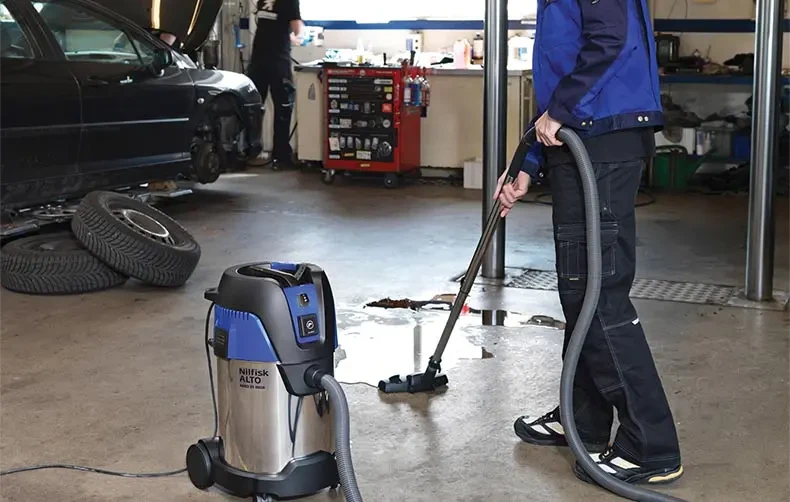
Tank
This is where the water you suck up is been deposited. Depending on the size of the vac, the tank can have up to 15-gallon water holding capacity. When not in use, the tank is meant to be dry, clean, and empty.
Blowing port
It provides an attachment where the blower band can be fixed.
Handle
This is a safe holding component of a shop vac. Some shop vacuums have an on or off switch attached to their handles for effective and swift control of the machine.
Tool storage
This is a removable toolbox attached to the shop vac. It contains some pieces of equipment and tools that the manufacturer believes will be necessary for repairs and adjustment of the machine parts.
Power cord
It is the source of electricity supply. It’s usually designed to avoid being soaked up with water.
Hose
Here’s the suction pipe that’s easily bendable and elongated to varying lengths.
Filter
This component traps the dust you’re cleaning. When cleaning debris mixed in water, you can use a foam sleeve as your filter.
How to Suck Up Water with Your Shop Vac
Outlined below are some steps or rules to follow to achieve maximum results.
Make a Suitable Choice of Machine
Not all shop vacuums are created equal; selecting the appropriate one depends on your specific requirements. Models vary, from heavy-duty units designed for construction sites to those tailored for domestic use. Consider factors such as tank capacity, wheel size for maneuverability, hose length, and power capacity. For draining large bodies of water, opt for a substantial tank, perhaps around 20 gallons. Evaluate the horsepower requirement, ensuring compatibility with your power source. Easy grip, user-friendly operation, and low maintenance are additional features to prioritize, particularly if technical expertise is not a necessity for your intended use.
Set-up Your Machine
If you newly purchased your shop vac, it is proper you go through the user guide to set up the machine properly.
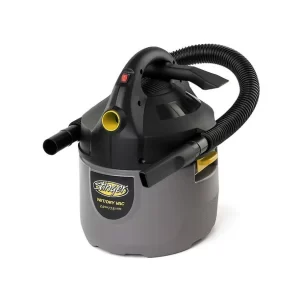
Shop vacuums, crafted with unique features by different manufacturers, offer versatile cleaning solutions. Unlocking their full potential necessitates adherence to prescribed usage guidelines outlined in the manual. Seek clarification on any ambiguous features and promptly report abnormalities to the manufacturer for resolution.
Safety is paramount when operating shop vacuums. Always power off the unit during setup to mitigate the risk of electrocution. For enhanced safety and proper functionality, consider employing a professional for setup and component checks. Conducting a mock cleaning session prior to actual use ensures the vacuum operates effectively.
Prioritize the cleanliness of the tank, ensuring it’s emptied and devoid of solid residues from prior usage. While shop vacs are designed for wet and dry functionalities, intentionally mixing the two should be avoided as water can damage the filter. During water suction, remove the filter to prevent damage and replace it when transitioning to solid waste suction.
Careful attention to filter placement is essential during replacement to prevent the release of dust while cleaning. By following these guidelines and maintaining vigilance, users can harness the full capabilities of their shop vacuums while ensuring a safe and efficient cleaning experience.
Plug into a Ground Fault Circuit Interrupter (GFCI) Outlet
When using a shop vac for water suction, the risk of water coming into contact with a bare wire poses a potential danger. To enhance safety, it is advisable to utilize a Ground Fault Circuit Interrupter (GFCI) outlet.
GFCI outlets are equipped with circuit breakers designed to swiftly cut off electricity in response to fluctuations or sudden changes in current flow. This rapid response is crucial, particularly in cases of electrocution, as the GFCI promptly detects the issue and interrupts the power supply.
However, it’s essential to note a drawback of GFCI outlets. If any power fluctuation triggers the circuit breaker, the entire branch circuit disconnects. This requires professional intervention for repairs, incurring financial implications.
Users face a choice between the enhanced safety provided by GFCI outlets and the potential inconvenience of repairs. While GFCI outlets offer swift response to electrical hazards, users must weigh the cost of occasional repairs against the added safety benefits or opt for regular power outlets.
Begin Cleaning
Once your shop vac is set up, embark on efficient wet cleaning by using the appropriate attachments for different purposes. Attachments designed for wet surfaces are laid flat on the ground, while those for larger debris vary in size according to the manufacturer’s design.
While working, pull the hose along with the attachment over the water pool, ensuring gentle and thorough water drainage. Wear safety boots to shield against potential electrocution risks, tie up long hair and loose clothing, and keep fingers away from moving parts.
Exercise caution around flammable liquids, as electrical sparks from the machine can ignite fires. Monitor the machine for indications of a filled tank, such as a slight increase in noise. When necessary, detach the tank, dispose of water, and reattach it to the motor. Prior to emptying the tank or changing the filter, switch off and unplug the machine to prevent accidents.
When not in use, store the hose in its designated place and avoid leaving the power cable on wet surfaces to enhance safety and longevity.
Observe Good Maintenance Culture
Just like other machines, shop vacuums require utmost care and maintenance after every usage and regularly when it’s not in use for a long time. There are few tips to observe:
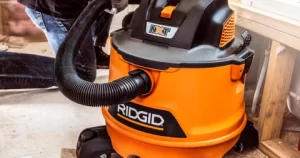
- Clean the tank
After using the shop vac, wash the tank with soap and warm water. Get rid of oily and greasy stains that may have been sucked up with the water. If stains are left, they may become permanent and make your vac look old and unappealing. The tank should be detached, cleaned, and dried before being replaced on the motor.
- Do a thorough clean-up
Use a wet soapy towel to clean the body of your equipment. Clean off stubborn stains before they become permanent. As you clean, be careful not to spill water into the electrical part of the machine.
- Repackage the machine
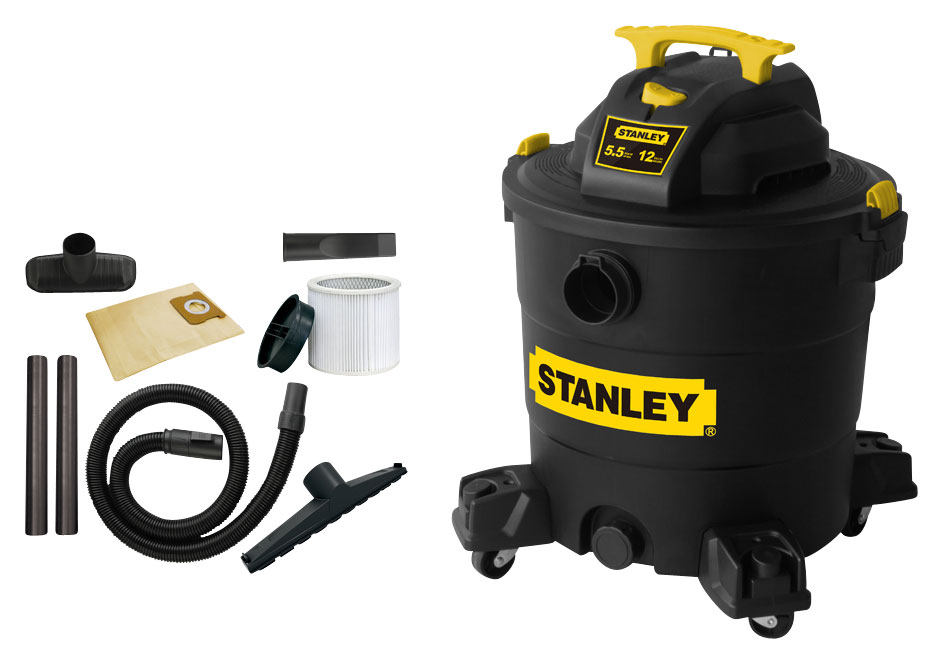
Roll up the power cord, hose, and put them in their right positions if provisions are made for them. The attachments and any other removable parts should be kept back in the carton or any place you designate for it. Thereafter, keep the machine in a safe place.
- Fix loosening parts
It’s normal for machine parts to get loose when used continuously. After using your vac, check if its components are still firm and intact. Some shop vacuums come with a toolbox containing tools that will be necessary for fixing loosening parts. It’s an indication that even the manufacturer expects you to regularly tighten the machine parts.
- Call a repairer when the machine gets faulty
If you notice any fault or unusual noise, it’s best to invite an expert. Always avoid the temptation to open the electrical components of the machine to fix it yourself.
Takeaway
A shop vacuum is an easy-to-operate and time-saving machine that is indispensable in any home. However, care must be taken to keep it out of the reach of children. And if they must use it, it should be under close supervision.

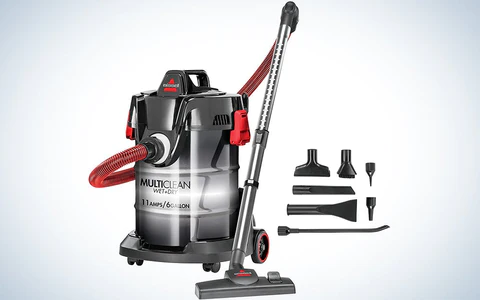




More Stories
How To Clean Shower Glass Doors Soap Scum
How To Turn Off Water To Toilet With No Valve
How To Make A Cheap Patio On Grass